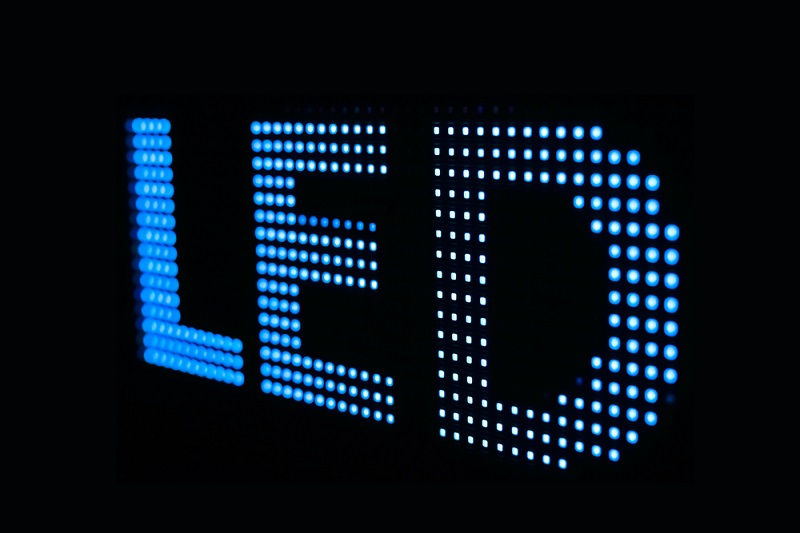LED Signs vs. Traditional Signage: Which One Works Best?
- zoehsewell
- Sep 12
- 4 min read

The war between LED signs and traditional signage has been escalating in the last decade. Both enjoy passionate followers, and understandably so. Each has something distinct to offer, from cost to visual appeal. However, making the choice between them isn't always an easy call.
This in-depth guide discusses all you should know about LED signs for business compared to conventional signage solutions. We'll delve into actual costs, customer attraction percentages, and ecological effects. You'll see which markets excel with each method, understand council laws, and even delve into combined strategies. At the end, you'll have all the knowledge necessary to make the optimal signage choice for your case.
What Are LED Signs and How Do They Work?
LED signs are the state of the art of contemporary advertising technology. LED signs employ light-emitting diodes to produce vibrant, dynamic messages that may be changed at the touch of a button. In contrast to their static equivalents, LED business signs may show a series of messages, animation, and even video messages during the day.
LED signs technology is surprisingly simple. Thousands of individual LED lights form pixels, much like your computer monitor or TV. These pixels are used to create text, images, and animation that can be seen from large distances. Today's LED displays link to computers or phones, permitting instant content switching from anywhere in the world. That's like putting up a lunch special advertisement in the morning and happy hour promotions by the afternoon, all without leaving your office.
Comprehending Traditional Signage Options
Traditional signage covers an exhaustive list of age-old choices that have been serving businesses for centuries. From hand-painted wooden signs to lighted channel letters, these signs are based on static designs and messages. Some common types include vinyl banners, metal plaques, neon signs, fabric awnings, and carved stone markers.
Every traditional choice offers its own uniqueness and charm. A retro neon sign can inspire nostalgia and authenticity that appeals to some markets. Hand-painted signs exhibit craftsmanship and care that digital screens just cannot match. Many businesses prefer traditional signage as it more accurately represents their brand image, especially in heritage precincts or marketing to customers who appreciate authenticity and heritage.
What Type of Signage Brings in More Customers?
Customer attraction rates differ greatly between LED and conventional signage, with several variables determining effectiveness. Studies show that LED business signs are able to bring 15-150% more foot traffic, depending on industry and location. Movement and illumination naturally attract attention, so are well-suited for placement along highways where drivers have seconds to see your business.
Flexibility and Content Management
Content adjustability is LED signs biggest strength over its predecessors. These digital screens switch from morning breakfast menu to lunch specials in a matter of seconds. They promote umbrellas when rain is threatening and ice cream during heat waves. This adaptability to real-time weather and inventory status optimizes marketing effectiveness throughout the day.
Environmental Impact and Sustainability
Environmental considerations increasingly influence signage decisions as businesses embrace sustainability goals. LED signs for business consume electricity continuously, contributing to carbon footprints. However, modern LED technology proves remarkably efficient, using 75% less energy than traditional illuminated signage. The longevity of LED bulbs - often exceeding 10 years - reduces waste compared to frequent bulb replacements in traditional lit signs.
The most environmentally friendly solution tends to marry both strategies with care. Employ long-lasting traditional signs as permanent brand recognition. Supplement with a secondary smaller LED signs screen for reversible promotional messages. This minimizes the size and power of the LED system while still allowing for flexibility in marketing. Incorporate solar-powered LED signs solutions for added greenness. Some companies even schedule their LED signs to dim or turn off during off-peak traffic hours, weighing visibility requirements against ecological accountability.
Legal Requirements and Council Regulations
Bending around council regulations becomes critical prior to installing any signs. Most Australian councils have detailed guidelines on sign size, brightness, location, and content. Business LED signs are subjected to particularly stringent regulations in view of the issue of driving distraction as well as neighbourhood character. Numerous councils ban animated messages near intersections or limit business hours in residential zones.

Making the Right Choice for Your Business
LED vs. traditional signage selection depends on honest evaluation of your company needs, budget, and objectives. Begin with evaluation of your message frequency - do you have to convey diverse information on a daily basis, or does your company have continuous messaging? Companies with revolving merchandise, shifting specials, or event-driven promotions benefit enormously from business LED signs.
Most companies realize that funding LED business signs is worthwhile when payments each month are balanced against higher sales. Alternatively, beginning with high-quality conventional signage and supplementing it later with LED components enables phased investment as the budget allows.
Future-Proofing Your Signage Investment
Technology evolves rapidly, making future-proofing a critical consideration for signage investments. LED signs for business continue advancing with higher resolutions, improved energy efficiency, and enhanced connectivity features. Investing in quality systems with upgradeability ensures your signage remains competitive. Choose manufacturers offering software updates and modular components that allow partial upgrades rather than complete replacement.
Conclusion
The debate between LED signs business signage and conventional signage never really has a best solution for everyone. Both technologies are better suited for certain conditions, used for distinct purposes, and sell to disparate audiences. Your ideal solution solely relies on your individual business situation, clientele, and long-term objectives. The most successful companies thoughtfully consider their own requirements rather than mindlessly leaping on trends.
With this investigation, we've discovered that LED signs have unparalleled flexibility, grabbing ability, and long-term content savings. They're perfect for businesses with dynamic messages, competitive industries, or busy locations. Timeless signage delivers classic beauty, dependability, and genuine character appreciated by some audiences and neighbourhoods. The hybrid solution more represents the best choice, leveraging the strengths of both technologies. This balanced method delivers the stability customers anticipate with the adaptability current marketing requires.
In the future, invest some time in thoroughly understanding your local laws, studying your customer base, and objectively determining your marketing requirements. Speak with mature signage experts familiar with both technologies. Ask for case studies from comparable companies in your sector. Keep in mind that the greatest signage investment is not always the most flashy or inexpensive - it's the one that regularly brings customers to your doorstep while accurately portraying your company. Whether you go with LED signs, standard, or a mix of both, make sure your signage speaks for you in a manner that resonates with the audiences you're targeting.



















Comments